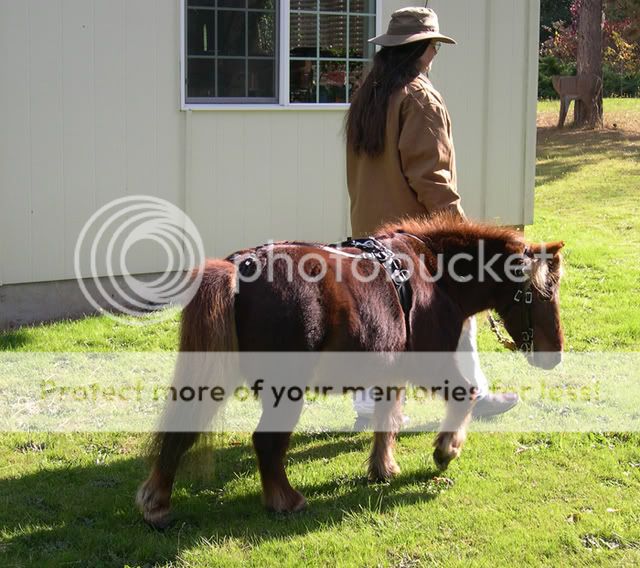RhineStone
Well-Known Member
Since I typed the last post and even before Susanne's post, I rewatched the video, but I had to go outside to do chores before it got too dark and cold. (My hands still froze up...Thank you, Myrna!
Your observations are quite accurate. At the time this video was shot. Mingus was raring to go, excited by his equine rivals and excited about having room to open up. I was most definitely guilty of getting caught off balance (esp. where I'm using the wooden seat training cart), even though I was the one giving the commands. He would move, I'd fall back... Not making excuses, as I don't feel that that excuse me.
I'm also terrible about wanting to lean forward at fast trot or canter...
Looking at various photos and videos, I am horribly inconsistent in my hand and arm position -- I could definitely use someone to rag on me while we work to keep me in line.
Mingus has a very soft mouth, and in ground-driving we had a fantastic communication between my hands and his mouth -- to the point where I could pretty much think about where I wanted him to go and he would go there. I feel that I've regained a lot of this while in the cart, but I still need to work and become consistent, and I really need to work on hand and arm position. I love your baby bird analogy -- and the keyboard position.
I so appreciate your observations, and I feel like I've just completed a lesson. I don't want to be the one holding Mingus back, and the comments I've received are an enormous help.
I can see where at times you have very little contact on Mingus' mouth (I have to ask, how did he get that name?). Then at other times, especially later on the beach, he asks for more rein, but doesn't get it. I think you just missed the signal. I'm not at all saying that at every point that a horse pulls on the rein, he should get more, but in this case, he is going to need more rein to be able to stretch down, which is where he needs to be. He needs to be encouraged to stretch down, and this can be accomplished through half halts. Think of massaging your horse's mouth, kind of like a cat "padding" a soft spot before laying down, but with a squeeze instead of a push. This will encourage him to stretch down, and when he does, let the rein out with him, quit massaging and let him be. Then repeat, then repeat, then repeat....
Another technique for asking the horse to put it's head down comes from John Lyons. He says to hold one rein and when the horse even thinks about lowering his head, you release the rein as the "reward". The concept is, "add pressure, when result is gained, release pressure". Pretty soon, the horse figures out that a hold on the rein means put head down. Simple behavior modification, Pavlov's bell, etc. I sometimes start that lesson standing in the barn aisle, especially with a mini that you can't ride. John says that you have to do something 100 times before they get it, but I think he says that so humans will do it 50 or even 25 times before they expect a consistant result. I think this technique works better with light-mouthed horses than with heavier ones.
However, what really got Alax to drop his head was small circles. Again, we have established that you don't do small circles with a very green horse, but like has already been said, some of these horses need to be pushed beyond baby steps now. Before we started small circle work last winter, Alax was consistantly above the bit, and he was EXTREMELY heavy on it. He would literally lean on my hands. (I doubt Mingus will do this, but he MIGHT get a little heavier before he gets lighter...) The small circles got him to rock back on his haunches and use himself properly, and the mean time, he got off my hands.
This was Alax in 2007 at his first carriage show. We acquired him in Oct. 05 as a 6-yr. old and started his driving training right away. His head also needed to come down. However, since this was his first big show, we didn't push him real hard.


(Turnout comment: I got rid of that off-white seat
This was Alax this year running a Gambler's Choice obstacle course, so he was pretty motivated (vs. an arena class, which he gets less enthused about now

This was Alax when my husband was doing his dressage test at a CDE in July. Chad always wants to hold Alax up more. I like this frame, but I think it might be a little "artificial", and he didn't get very good relaxation points. I keep telling Chad to let go a little, that it will come eventually.

You can see in both photos that we have nice contact on his mouth. (Actually, I think that Chad has "pushing" hands in this photo, but I don't know how to explain that.) You aren't going to get anywhere without contact, as any horse will just shuffle around on their own accord, like the first photo. Using this heavier blue vehicle also got Alax to use his hind better.
Myrna




















































